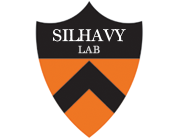A second transport system for sn-glycerol-3-phosphate in Escherichia coli
Type
Strains containing phage Mucts inserted into glpT were isolated as fosfomycin-resistant clones. These mutants did not transport sn-glycerol-3-phosphate, and they lacked GLPT, a protein previously shown to be a product of the glpT operon. By plating these mutants on sn-glycerol-3-phosphate at 43 degrees C, we isolated revertants that regained the capacity to grow on G3P. Most of these revertants did not map in glpT and did not regain GLPT. These revertants exhibited a highly efficient uptake system for sn-glycerol-3-phosphate within an apparent Km of 5 micron. In addition, three new proteins (GP 1, 2, and 3) appeared in the periplasm of these revertants. None of these proteins were antigentically related to GLPT. However, like GLPT, GP1 exhibits abnormal behavior on sodium dodecyl sulfate-polyacrylamide gels. GP 2 is an efficient binding protein. The new uptake system showed different characteristics than the system that is coded for by the glpT operon. It was inhibited neither by phosphate nor fosfomycin. So far, none of the systems that transport organic acids in Escherichia coli could be implicated in the new sn-glycerol-3-phosphate uptake activity. The mutation ugp+, which was responsible for the appearance of the new transport system and the appearance of GP 1, 2, and 3 in the periplasm was cotransducible with araD by phage P1 transduction and was recessive in merodiploids.

